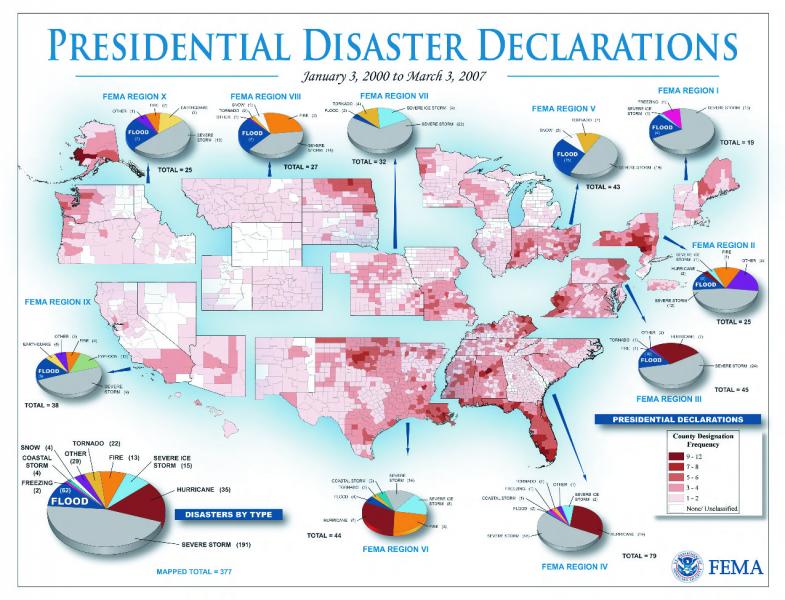Submitted by Steve on Tue, 05/08/2012 - 09:11
I’ve blogged before about dam break disasters. If you have interest in ‘natural’ hazards
like I do, dam break floods always draw because:
(1) There are so many potential candidates out there. Something like 80,000 dams exist in the
USA. Go worldwide and the number
multiplies to 850,000. Untold millions of people live and work under
the influence of one of those things. Often the culprits are far from mind,
lurking out of sight in distant hills.
Submitted by Steve on Thu, 04/12/2012 - 12:05
I’m not from the “Show Me” state,
but like those folks, I tend to believe it when I see it. Earth scientists like
myself have some advantage in seeing because we “dig in the dirt”. From what we
find there we can envision geological happenings over scales of space and time
that others can’t fathom.
Submitted by Steve on Sun, 03/11/2012 - 16:49
Have you ever watched one of
those television shows about Pompeii? Pompeii and its neighbor Herculaneum were
Roman-era towns at the foot of Mt. Vesuvius, an active volcano adjacent to the now
Italian city of Naples. In 79 AD, Vesuvius erupted and quickly buried the two places.
The old towns lie forgotten for nearly two millennia. It wasn’t until the
18-century that a farmer digging a water well discovered, at the bottom of the
hole, a Herculaneum house with finely tiled walls. Not long after, diggers encountered
Submitted by Steve on Mon, 02/20/2012 - 12:32
You have to admit that there is something special about the term
‘Flash Flood’. Think about it.
There are no ‘flash hurricanes’, no
‘flash tornadoes’, nary one ‘flash earthquake’ that I’ve heard of. It seems that only floods flash.
Submitted by Steve on Mon, 01/30/2012 - 11:54
Lahar. Sounds
like a word that you’d find in the Klingon dictionary. I’ve lost my copy, but I
do have handy the “Encyclopedia of Geological Terms”.
Lahar: A dense,
fast flowing mixture of water, mud, ash, rock and debris. Lahars typically form on the steep
slopes of volcanoes that experience a sudden influx of water from rapid glacier
melt or heavy rain.
Submitted by Steve on Thu, 01/12/2012 - 13:10
“Positively Glacial.” Does that expression ever come to your
mind? Standing in bank teller
lines, it comes to mine. Waiting
for my teenage son to take out the trash, it comes to mine.
Submitted by Steve on Mon, 01/02/2012 - 11:43
Sometimes when visiting out-of-state relatives on holiday
I’m asked…
“How can you live in California with all those
earthquakes?”
Usually I smile and joke about getting ocean front property
in Arizona.

Submitted by Steve on Wed, 12/14/2011 - 14:19
Not so long ago, I attended a meeting in Maui. At the reception the barista served a
cold rum concoction called “Lava Flow”.
Truth to say I sampled several, however I’m here now to tale about that
second kind of lava flow, the hot one.
Pu’u ‘O’o crater lies in the Southeast rift zone of Kilauea
Volcano on the Hawaii’s Big Island. Perhaps you have heard of it? Pu’u ‘O’o has been actively spilling
lava since 1983 and has recently been in the news again.
Submitted by Steve on Sun, 11/20/2011 - 16:14
Last round I blogged about
Natural Hazards and the Demise of Civilization. The civilization was the
Minoans of 1628 BC. Like the goings-on in the original Star Wars trilogy, that demise happened a long, long time ago in a
place far, far away. So long and so far really, that both seem more fairy tale
than fact.
Submitted by Steve on Mon, 11/07/2011 - 11:32
Most of us experience nature’s
hazards in fairly benign ways. Perhaps our electricity goes out for a few days
in an early snowstorm or we’re forced to detour for a while from our usual road because a bit of it sloughed into a creek during a heavy rain. Sure, on
occasion, natural disasters are more serious. Fires and landslides do sweep
through neighborhoods. Whole towns do vanish in tornados and hurricanes. Still,
most of us witness large-scale disasters only on late night TV or by Google at
Pages
 Steven Ward is a Research Geophysicist at
the Institute of Geophysics and Planetary Physics, UC Santa Cruz. He specializes in the quantification and simulation of
natural hazards. Read Steve's blog.
Steven Ward is a Research Geophysicist at
the Institute of Geophysics and Planetary Physics, UC Santa Cruz. He specializes in the quantification and simulation of
natural hazards. Read Steve's blog. John Rundle is a Distinguished Professor of Physics
and Geology at UC Davis and
the Executive Director of the APEC Collaboration for Earthquake Simulations. He
chaired the Board of Advisors for the Southern California Earthquake Center from 1994 to 1996. Read John's blog.
John Rundle is a Distinguished Professor of Physics
and Geology at UC Davis and
the Executive Director of the APEC Collaboration for Earthquake Simulations. He
chaired the Board of Advisors for the Southern California Earthquake Center from 1994 to 1996. Read John's blog.

